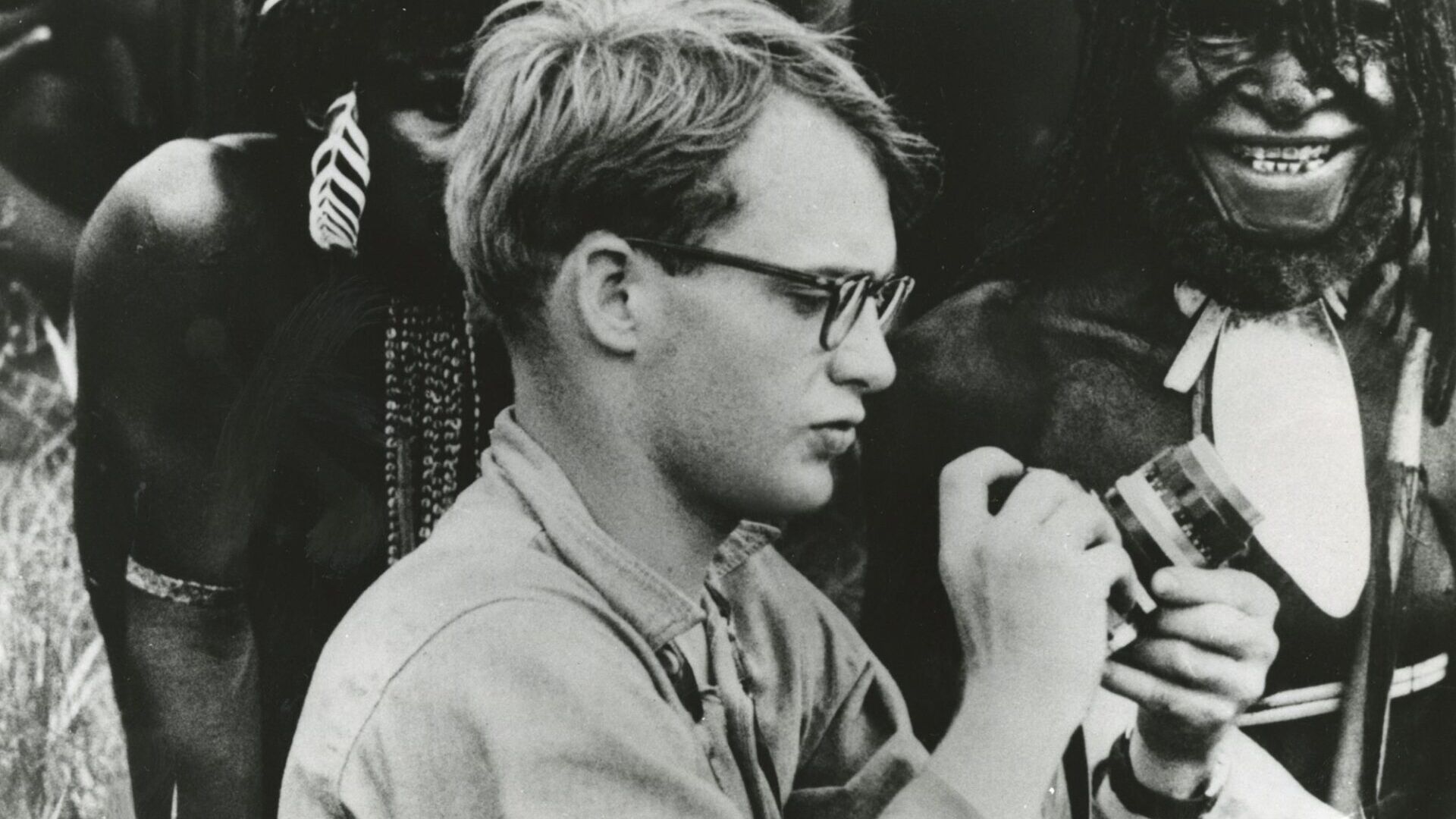Looking at a picture of Michael Rockefeller, he could easily pass as your average 23-year-old Silver Lake hipster: Tortoise-shell glasses, unkempt hair, and a wanderlust spirit shine through the only remaining photos of him. While his disappearance is still an unsolved mystery, his name remains in the front of our minds, especially in director Fraser C. Heston’s, who uncovered a treasure trove of never before seen footage, shot by a man who set out to search for the young Rockefeller back in the sixties. Heston uses this footage and finishes the film that was never made, appropriately titling it, The Search For Michael Rockefeller.
It’s one of the country’s greatest mysteries- Just what happened to Michael Rockefeller, son of New York Governor Nelson Rockefeller and heir to the J.D. Rockefeller oil empire? During an expedition to New Guinea in 1961, as is last documented, Michael was traveling on a motor boat with a companion and some locals when it suddenly broke down, stalling in the middle of the Ocean. For years, many people have speculated that he had drowned at sea while trying to swim to the shore; others are convinced he was eaten by cannibals. Years later, in 1969, journalist Milt Machlin takes it upon himself to discover what happened to Rockefeller by bringing along a film crew to retrace the steps Michael would have walked. What’s left is hours of black & white 16mm film that was never followed through by Machlin, but luckily enough, fell right into the hands of Heston, who creates a chilling and exceptionally mysterious documentary with the material he is given.
The last five of the film prove to be most interesting to me, and the woman next to me who audibly gasped- did we just catch a glimpse of Rockefeller?
The style of the film is obviously dated–authentically dated–but dated nonetheless. I mention this because at times the film runs slowly, archival footage of photos with slow zooms in and out can only hold one’s attention for so long. It’s understandable that Heston only had so much material to work with, and it’s not like he could plan any pick-up shoot days or control any cinematic aspect of the film whatsoever, but my resolution to the dragging would be to cut half of the voice-overs. Voice-over narration dominate the film, and each “character” “interviewed” speaks in a distinct accent that sounds like they took inspiration from Disneyland’s The Jungle Cruise ride. A bit cheesy, especially since this is the format throughout the entire film.
Historically, The Search For Michael Rockefeller is a great accomplishment for Heston and a very interesting film for audiences. Unfortunately, though, there is no happy or even satisfying ending; in fact, we leave the theater with more questions than answers. The last five minutes of the film prove to be the most interesting to me, and the critic next to me who audibly gasped– did we just catch a glimpse of Rockefeller? The archival footage from 1969 ends on a shot of an Asmat tribe rowing in long boats– all are dark-skinned and wearing tribal jewelry and cloth pieces for clothing. But then there is this one man, shown only for a few frames, who stands in stark contrast with white complexion Upon closer examination and slow-motion, Heston plants a massive seed in our minds: this could very well be the missing the young Rockefeller. But we don’t know or learn for sure, and probably never will.
Michael Rockefeller has clearly been a passion of Heston’s, and this film is shining proof of that. While interesting for fans of historical documentaries, the average movie-goer may find the execution tired and, shall I say it, boring. I personally found it a little bit of both, but those last five minutes really made the film worth it for me. If this sounds interesting, The Search For Michael Rockefeller will be available to stream on Netflix starting February 1st.
Morgan Rojas
Certified fresh. For disclosure purposes, Morgan currently runs PR at PRETTYBIRD and Ventureland.


